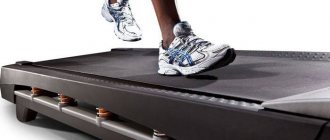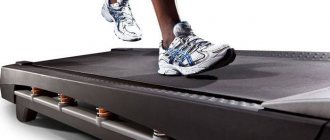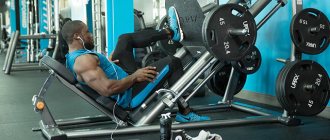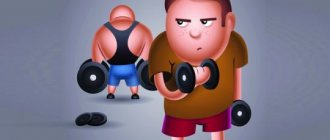Home ▸ Articles ▸ Workouts ▸ How much cardio do you need to lose weight?
Cardio is good for your heart and burns fat, and whether you love it or hate it, you should do it. Including if you want to lose weight.
But first of all, you need to cut calories in your diet. Only a calorie deficit will help you lose fat. Secondly, you need to lift weights. Without strength training, your diet will leave you weak and with flabby muscles. Weight training sends a message to your muscles that they are not allowed to burn out. Plus, the more muscle you have, the higher your resting metabolic rate and the more calories you'll burn each day in and out of the gym.
This brings us to cardio. There is aerobic (stationary) work and interval training. Both methods are good additions to your diet and weight training, but neither helps you get a lean body as much as you probably think.
The Naked Facts About Cardio Training
Aerobic training (steady state cardio)
Let's find out how many calories we burn with one of the most effective and popular workouts - running. According to a Harvard University study, a person weighing about 84 kg running at a speed of about 13 km per hour can burn 555 calories in 30 minutes.
Does this seem like a lot? Yes and no. That's more calories than you'll likely burn in the same amount of time lifting weights (266 calories), but you'll have to eat something at some point during the day. And this is a problem because it is much easier to consume calories than to burn them.
Let's say this 84-pound runner combines his workouts with a healthy, protein-rich meal that consists of 8 ounces of skinless chicken breast, one cup of brown rice, and as much broccoli as he can fit on his plate, seasoned with one tablespoon of olive oil. That's just under 600 calories.
In other words, just eating HEALTHY (most people don't eat that healthy) will largely cancel out the calories you burn in one intense aerobic workout session. Plus, you'll have to eat more than once a day, but you won't be going back to the gym over and over again, so eating even the cleanest foods can negate your calorie-burning efforts.
HIIT (interval training)
According to the American College of Sports Medicine (ACSM), alternating hard workouts with periods of light work or rest (which you probably know as high-intensity interval training, or HIIT) can burn more calories per minute than aerobic workouts.
This makes HIIT more time efficient, but because interval sessions are more intense than aerobic sessions, they may not last as long, meaning you won't burn more calories overall.
A study published in the American Journal of Human Biology compared stationary training to HIIT. The subjects alternated sessions in which they ran for 20 minutes without a break, keeping their heart rate at a moderate level, with workouts in which they did repeated 20-meter sprints.
After seven weeks, the total exercise time on the runs was naturally much longer, and so roughly 4,410 calories were burned in the stationary workout versus just 907 in the HIIT workout.
Moderate intensity interval training
According to Don Saladino, a New York-based trainer for celebrities such as Ryan Reynolds and Blake Lively, each of the three days allocated for cardio should be done with a different type of cardio, and there are three in total. “You have your stationary training, your HIIT and then moderate-intensity cardio,” says Saladino. This last category is what most people think of as HIIT, but it's actually not. It's a cross between true HIIT and aerobic work.
Moderate intensity interval training is everything between brisk jogging and walking. This could be jumping rope, battle rope waves, a circuit of weight-bearing exercises, or anything else that gets your heart rate up and allows you to give your heart a little boost as well as a little recovery before moving on.
This is different from HIIT, which is so intense that it can only be sustained for four to six seconds. We're talking full sprints, combat kicks, or Airdyne bike work. Since it has a big impact on both the nervous system and the muscles, you should limit your HIIT sessions to two workouts per week.
Finally, there's steady-state cardio, where all you have to do is set your heart rate between 120 and 150 beats per minute and hold it there for 30 to 60 minutes. You can do this workout almost every day if you want, but one day a week combined with HIIT and moderate-intensity interval training is enough.
Each type of cardio trains a different energy system, so it's important to develop each to get fit, but none can replace strength training and diet when it comes to getting your abs ready for the beach.
Bottom line
The question of how to lose weight on an exercise bike at home is very interesting. And in our article we can unequivocally state that losing weight at home with the help of this completely universal sports unit is possible and necessary. The answer to the question: “How?” woven from the smallest nuances, 75% related to your age, current state of health, and the ability to strictly adhere to your diet. The remaining 25% is a training program in which the principle of gradually increasing loads with interval training 4-5 times a week for 30 minutes prevails. They are the most difficult for our body to adapt to.
We sincerely wish you good luck and victory over excess weight!
The connection between cardio training and diet
A study from the Journal of Obesity looked at obese women who dieted or exercised, or combined diet and exercise, for a year to lose weight. Unsurprisingly, the exercise-diet group lost the most weight, about 20 pounds (and nearly 6% body fat).
However, women who simply dieted weren't far behind, losing about 7 kg (and 4% body fat). And women lost only about 2 kg and a little more than 1% fat with training alone.
All this means is that lifting weights and doing cardio is good, but unless you eat less than you did last month, the only six-pack you'll see will be a 6-pack of Budwiser.
If you cut calories and lift weights three to four days a week (three is the minimum number most trainers say you need to progress), you only need about three cardio days a week to see your abs, recommends Saladino .
How often should you exercise?
Very often, beginners obsessed with the idea, for whom it is important to achieve results, read one or two articles on how to quickly lose weight on an exercise bike at home, decide that they need to train 24/365 and... quickly start, but also quickly finish the training process. And here's why: even if the calendar says it's May and you're going on vacation in two weeks, don't rush to damage your health by rushing off the bat and working out 2-3 hours a day. Fatigue and bad mood will cover you after 3-4 classes, and resentment over the “exercise bike that you didn’t lose weight with” will not allow you to realize your own mistake.
You can lose as much weight as you need on an exercise bike, but not in two weeks. Having developed a hypertensive crisis or a heart attack (quite realistic if you exercise “with the tenacity of a ram” without consulting a doctor), you will not improve your figure, but you will get problems.
The ideal training regimen for a beginner is every other day, 3-4 times a week. What about duration?
What is EPOC and its role in weight loss?
You may have heard of a phenomenon called EPOC, which stands for excess post-exercise oxygen consumption. This is the period when your body recovers from exercise and burns calories faster than at rest. Some trainers talk a lot about EPOC, claiming that it's better than steady-state cardio because it allows you to burn calories while you're doing nothing (similar to how building muscle affects your metabolism). But the truth is that the EPOC effect is not that great.
According to the ACSM, we burn only 6% more calories during EPOC than during the actual workout (more if you ran very intensely—harder than most people are capable of, but still not that much).
So is cardio just a huge waste of time? Of course not. It still burns fat and improves endurance, and more importantly for your health, it strengthens your heart, lowers your blood pressure, helps you recover faster from strength training, and does many other beneficial things. But the fact remains that any exercise, when done without changing your diet, does not make much difference in weight loss.
See detailed instructions on how to implement each cardio method and enjoy your summer.
The benefits of cardio training
During exercise, blood circulation increases and the heart pumps more blood per contraction, resulting in improved functioning of the cardiovascular system.
If such training is carried out regularly with the same intensity, the body gets used to it, and endurance increases during exercise. If it’s hard for a beginner to train for 20 minutes, then for a trained person, fatigue from the load will come later.
During exercise, the body requires more oxygen, so lung capacity increases , which also has a positive effect on endurance. Consequently, breathing will become deeper and more correct, which will help burn more calories.
Reducing anxiety and stress levels : during training, the amount of endorphin, the hormone of joy, increases. And if you’re in a good mood and there’s no stress, then you don’t need to binge on anything.
Losing excess weight by burning subcutaneous fat and strengthening muscles .
Cardio training scheme
HIIT
- Frequency: 1-2 times a week
- Exercises: sprints, hill sprints, stationary bike sprints, Versaclimber sprints, battle ropes
- How to do it: Warm up and then work as hard as possible for 4-6 seconds. Rest until you feel ready to repeat.
- Training time: 12–15 minutes
Moderate intensity interval training
- Frequency: 2-3 times a week
- Exercises: fast runs, jumping rope, weight circuits, sled pushes, battle rope waves
- How to do it: Create your own intervals. Any fast pace will do, but not the maximum pace for the interval. Alternate this with active recovery. For example, jump rope for 60 seconds and stretch your inner thighs for 30 seconds.
- Training time: 15–30 minutes
Stationary cardio
- Frequency: 1-3 times a week
- Exercise: jogging, cycling, swimming, walking
- How to do it: Work at a pace that keeps your heart rate between 120 and 150 beats per minute.
- You can wear a heart rate monitor or evaluate it as follows. Subtract your age from 220 to find your estimated maximum heart rate. Now place your index and middle fingers on the pulse in your neck and count for six seconds. Multiply this number by 10 to get the number of times your heart beats per minute at rest.
- Training time: 30–60 minutes
What is cardio training
Cardio training is a type of physical dynamic activity lasting 20–60 minutes with a relatively low intensity, aimed at strengthening the cardiovascular system and increasing endurance. This type of training is necessary to maintain physical fitness.
Conventionally, all physical exercises can be divided into aerobic (cardio) and anaerobic (strength). It must be emphasized that this division is very conditional. It is impossible to call any type of exercise aerobic or anaerobic in its pure form.
As with any other type of physical activity, before training you need to do a warm-up to warm up your muscles, and after it - a cool-down, several stretching exercises to relax them.
Cardio exercises include fast walking, climbing stairs, running, dancing, swimming, various types of games, aerobics, fitness, skiing, rowing, exercise equipment, etc.
An important condition when performing cardio exercises is to maintain a given heart rate throughout the entire workout.










